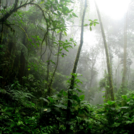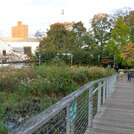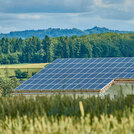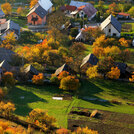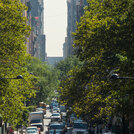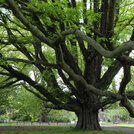Schnabel, Florian, Joannès Guillemot, Kathryn E. Barry, Melanie Brunn, Simone Cesarz, Nico Eisenhauer, Tobias Gebauer, Nathaly R. Guerrero-Ramirez, I. Tanya Handa, Chris Madsen, Lady Mancilla, Jose Monteza, Tim Moore, Yvonne Oelmann, Michael Scherer-Lorenzen, Luitgard Schwendenmann, Audrey Wagner, Christian Wirth, and Catherine Potvin. “Tree Diversity Increases Carbon Stocks and Fluxes Above—But Not Belowground in a Tropical Forest Experiment.” Global Change Biology 31 (2025). https://doi.org/10.1111/gcb.70089.
Fast Fact Library
Rowland, Phebe I., Melissa Wartman, Jasmine Bursic, and Paul Carnell. “Restored and created tidal marshes recover ecosystem services over time.”
Environmental and Sustainability Indicators 24 (2024). https://doi.org/10.1016/j.indic.2024.100539
Wei, Dandan, Andrew Reinmann, Luke D. Schifer, and Roisin Commane. High resolution modeling of vegetation reveals large summertime biogenic CO2 fluxes in New York City. Environmental Research Letters 17, 12 (2022). https://doi.org/10.1088/1748-9326/aca68f.
Graham, Maggie, Serkan Ates, Andony P. Melathopoulos, Andrew R. Molkdenke, Sandra J. DeBano, Lincoln R. Best, and Chad W. Higgins. “Partial shading by solar panels delays bloom, increases floral abundance during the late-season for pollinators in a dryland, agrivoltaic ecosystem”. Scientific Reports 11, 7452 (2021). https://doi.org/10.1038/s41598-021-86756-4.
Wilkes, Phil, Mathias Disney, Matheus Boni Vicari, Kim Caleders, and Andrew Burt. Estimating urban above ground biomass with multi-scale LiDAR. Carbon Balance Manage 13, 10 (2018). https://doi.org/10.1186/s13021-018-0098-0.
Nowak, David J., Nathaniel Appleton, Alexis Ellis, and Eric Greenfield. (2017). Residential building energy conservation and avoided power plant emissions by urban and community trees in the United States. Urban Forestry & Urban Greening 21: 158-165. https://doi.org/10.1016/j.ufug.2016.12.004
McPherson, Greg, James R. Simpson, Paula J. Peper, Scott E. Maco, and Qingfu Xiao. (2005). Municipal forest benefits and costs in five U.S. cities. Journal of Forestry 103(8), 411-416.
Akbari, Hashem, Mel Pomerantz, and Haider Taha. (2001). Cool surfaces and shade trees to reduce energy use and improve air quality in urban areas, Solar Energy, 70 (3), 295-310.
Simpson, James R., and E. Gregory McPherson. (1996). Potential of tree shade for reducing residential energy use in California. Journal of Arboriculture, 22(1), 10-18.
McPherson, Gregory E., David J. Nowak, Rowan A. Rowntree. (1994). Chicago’s Urban Forest Ecosystem: Results of the Chicago Urban Forest Climate Project. USDA Forest Service Northeastern Forest Experiment Station General Technical Report NE-186, 63-81.

